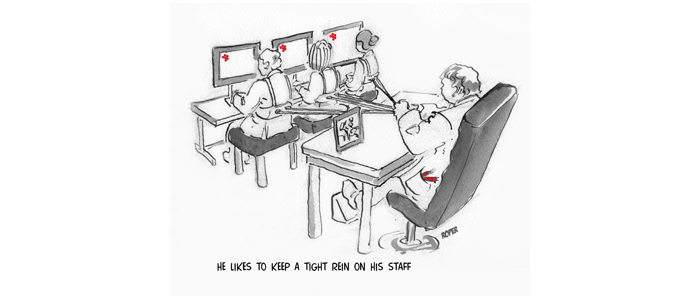As a contributing editor to inc.com, Jeff Haden has recently published an article entitled ‘A Study of 600,000 People Shows the Secret to Managing Millennials Is to Quit Thinking of Them as Millennials’. It’s a timely and essential read, and we couldn’t agree with Jeff more. As he points out: how we think, feel, and act has far less to do with our age group and instead highlights the truth that we are all individuals and so need managing accordingly.
I just did a Google search for “manage Millennials.” I got 28 million results. That’s total overkill, especially since a recent study published in the Journal of Managerial Psychology shows there are much greater attitude and behavior differences within generations than between generations.
The researchers studied over 600,000 people across an eight-year span. (How’s that for establishing a statistically significant sample size?)
What did they find?
“The magnitude of generational differences is small to near-zero.”
In fact, only 2 percent of an individual’s attitude can be attributed to their generation.
Ninety-eight percent of how we think, feel, and behave has absolutely nothing to do with our age group. That means two Millennials are likely to have greater differences between them than, for example, a Millennial and a Baby Boomer.
Which makes it odd that a seminar I recently attended claimed it would teach me everything I needed to know about supervising, managing, and leading Millennial employees.
Like:
- Positive reinforcement and encouragement will get the best out of Millennials (and if I do have to give constructive feedback, I should first find a way to spin it in positive terms) because where Millennials are concerned, positive feedback is everything.
- Flex hours, flex workdays, flex workloads–flex everything–is the best way to engage and retain Millennials, because to Millennials, flexibility is all-important.
- Millennials want but are much less likely to ask for training opportunities than other age groups (they supposedly expect opportunities to be given, not requested). In order to grow their skills, managers need to create and implement formal development plans.
Those are just some highlights. I really didn’t learn anything useful.
Granted, Millennials are different. But so are Boomers. And Gen-Z. But is it possible that every Millennial has the same preferences and characteristics?
Of course not. Millennials are different, I’m different, but more to the point, people are different. Every person brings a different set of goals, experiences, skills, talents, and perspectives.
That means every individual has a different–better yet, an ideal–way they should be treated, managed, and led.
No one, Millennial or not, responds to criticism the same way. No one, Millennial or not, seeks the same types of latitude, autonomy, and flexibility. No one seeks the same types of training, the same types of opportunities, or has the same willingness to step forward to ask for those opportunities.
So I didn’t really learn anything because all I was told is how to manage generalizations and stereotypes, and that guidance, while sparking some interesting discussions, isn’t helpful.
Leaders may be responsible for managing groups, but leaders ultimately lead individuals.
And every individual is different.
So what is the best way to lead a Millennial employee? Start by forgetting his or her age. Ignore stereotypes. Ignoring sweeping generalizations.
And then focus on the person.
For example, Millennials may appreciate positive reinforcement (who doesn’t?), but what matters is how each individual responds to recognition.
Some people enjoy public praise. Others cringe when made the center of attention. Some people might appreciate just a quiet word of thanks.
Your job is to find out what makes the greatest impact for each individual, and provide that.
Another example: Millennials value flexibility (who doesn’t?), but what matters is the kind of flexibility each individual values. One may appreciate flexible hours; another may appreciate occasionally working from home; another may love the option of carving out meeting-free blocks of time.
Your job is to find out what each individual values in terms of flexibility and latitude, and provide that.
One more example: Millennials want training and development (who doesn’t?), but what matters is the kinds of opportunities each individual seeks, and how they best learn.
Formal training is great for some. But others want the freedom to step in and help and learn on the job.
Your job is to find out what each individual hopes to achieve, and provide that.
Millennial employees aren’t one-size-fits-all. Accepting sweeping generalizations is dangerous because it allows us to think we’re doing the right things, when, in fact, we’re not.
Instead, forget the fact one employee is a Millennial. Forget the fact another is Gen-Z. Age differences are only a small slice of what makes each individual different. To lead, you must first take the time to truly know the person and then adapt how you lead to the interests, needs, and goals of that individual.
That’s how you lead Millennial employees.
That’s how you lead every employee, because the age group doesn’t matter.
Where great leadership is concerned, what truly matters is knowing and adapting to the different needs, interests, and goals of each person on your team.

